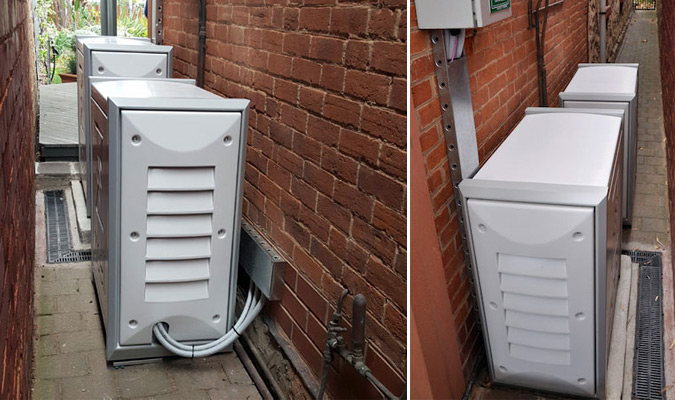Flow battery is a type of rechargeable battery that stores energy in liquid electrolytes contained in external tanks. It differs from conventional batteries in several ways.
One key difference is that the energy storage capacity is decoupled from the power capacity. This feature makes flow batteries particularly suitable for large-scale energy storage applications.
In the solar industry, flow batteries are used in grid-scale energy storage systems that are connected to solar farms. They are also found in off-grid solar installations.
These batteries help manage the fluctuations in solar energy production. They do this by storing excess energy during times of peak solar generation.
Then, they release this energy when the demand is high. This is particularly useful when solar production is low, such as during the night or on cloudy days.
How Does Flow Battery Work?
Flow battery works based on the flow of electrolytes through electrochemical cells. Its system is made up of two tanks filled with electrolyte solutions, each with a different chemical composition.
These electrolytes flow through a special cell where the battery either stores or releases energy. Common combinations of electrolytes include vanadium, zinc-bromine, and iron-chromium.
Charging
When the battery is charging, the electrolytes are pumped through this cell. Here, electrochemical reactions take place. The reactions in a flow battery involve the movement of ions between the electrolytes and the electrodes.
As this happens, electrical energy from an external source is converted into chemical energy. Subsequently, the resulting chemical energy is stored within the electrolyte solutions.
Discharging
When there’s a need for electricity, the process reverses. The electrolytes are circulated back through the cell. During this stage, the stored chemical energy is transformed back into electrical energy.
This is done through reverse electrochemical reactions. These reactions release the stored energy as an electrical current.
The ability to switch between charging and discharging allows flow batteries to go through multiple charge and discharge cycles.

Flow Battery Advantages
They offer a range of benefits, making them a promising option for energy storage solutions.
- Scalability — Because they’re modular, they can be easily scaled up by adjusting the size of the electrolyte tanks.
- Large-Scale Suitability — Ideal for large-scale energy storage applications.
- Long Lifespan — Minimal degradation over time. Their performance is less affected by charge and discharge cycles.
- Flexibility — They can store energy for long durations and can be charged and discharged simultaneously.
- Safety — Non-flammable and less prone to hazards.
Flow Battery Disadvantages
Despite their potential, flow batteries also present several challenges that need consideration.
- High Costs — More expensive than conventional lithium-ion batteries.
- Weight Issues — Heavy, limiting them to stationary applications.
- Complex Monitoring/Controls: Increased system complexity and cost.
Flow Battery Example
Examples of flow batteries include:
Vanadium Redox Flow Battery (VRFB)
Vanadium-based flow batteries use vanadium electrolytes in different oxidation states (vanadium ions with varying charges) to store energy. They are known for their relatively high efficiency and long cycle life.
Zinc-Bromine Flow Battery
These batteries use zinc and bromine dissolved in electrolytes. They offer good energy density and are often considered for large-scale energy storage applications.
Iron-Chromium Flow Battery
Iron and chromium are used as active materials in the electrolyte solutions. They offer the potential for cost-effective energy storage but might have lower energy density compared to some other flow battery types.
Flow batteries continue to undergo research and development to improve efficiency, reduce costs, and enhance their suitability for various renewable energy storage applications.
This ongoing advancement is crucial for diversifying solar battery types and optimizing their integration with solar energy systems.
Reviewed by

Tom Ransome
Co-Founder of Renewables4U and renewable energy advocate. He has experience and extensive knowledge in the field, including a groundbreaking academic thesis and a significant role in Australia's solar industry since 2016. With a BA in Business Studies, focusing on finance and management, Tom merges business acumen with technical expertise to deliver economically and eco-friendly projects.

